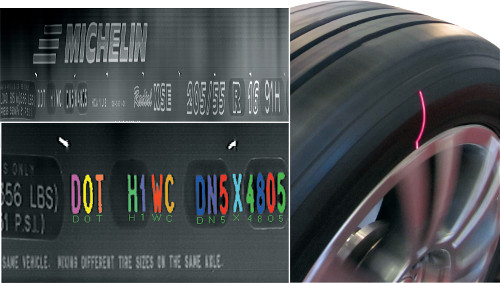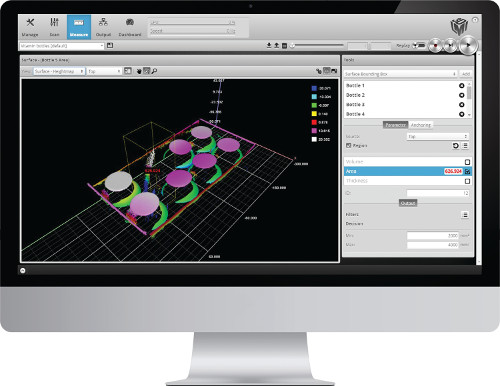Better Machine Vision: The Benefits of Combining 2D and 3D (Part 3)
Here are two application examples where the combination of 2D and 3D provide results that cannot be achieved by either technology on its own.
Example 1.
INDUSTRY: RUBBER & TIRE
APPLICATION: DOT-Code Identification
Combining traditional 2D area-based inspection with the geometry information in 3D height maps offers a more comprehensive solution resulting in full 3D measurement.
The Challenge: Reading Characters on the Tire Sidewall
Tire sidewalls contain various alphanumeric information in the form of raised or embossed characters. Characters include tire identification codes for sorting, and DOT-codes for tracking the vehicle at the time of assembly.
Reading alphanumeric characters requires a combination of 3D and 2D inspection because neither can complete the task on its own. The raised or embossed DOT-Code characters on the sidewall are “black-on-black,” with effectively zero contrast. This prevents 2D machine vision from capturing the outline or edges of the characters.

Combining 2D and 3D Machine Vision Capability
To solve the zero contrast problem, 3D scans reveal embossed characters and render them as a heightmap. The heightmap data is then sent to third-party 2D vision software for optical character recognition (OCR).
Example 2.
INDUSTRY: PACKAGING
APPLICATION: Container Filling Automation
A typical package filling application involves loading multiple discrete objects into a larger container for shipment. This process needs to be optimized in order to ensure accurate filling and minimize shipping costs.

How 2D and 3D Work Together In Single Smart Sensor
In this process, the total volume of the main container, as well as the shape and volume of the objects being packed into that container, have to be scanned in order to optimize the use of total available space. This requires accurate 3D volume information.
In addition, each object’s barcode must be scanned in order to verify that it is the correct object/product type for that specific container, which requires contrast-based 2D vision processing.
A 3D smart sensor is capable of applying both 3D and 2D imaging simultaneously to achieve optimal container filling in fast-moving, high-volume inline environments.
Haven't read part one or two yet?
Find them here:

Recent Comments
Therefore great deal to take place over kinds...
Gee… I translate writes on a similar to...
As it turned out, it is quite possible...
For some it is significant, and so research...
nike tiffany and co jacket